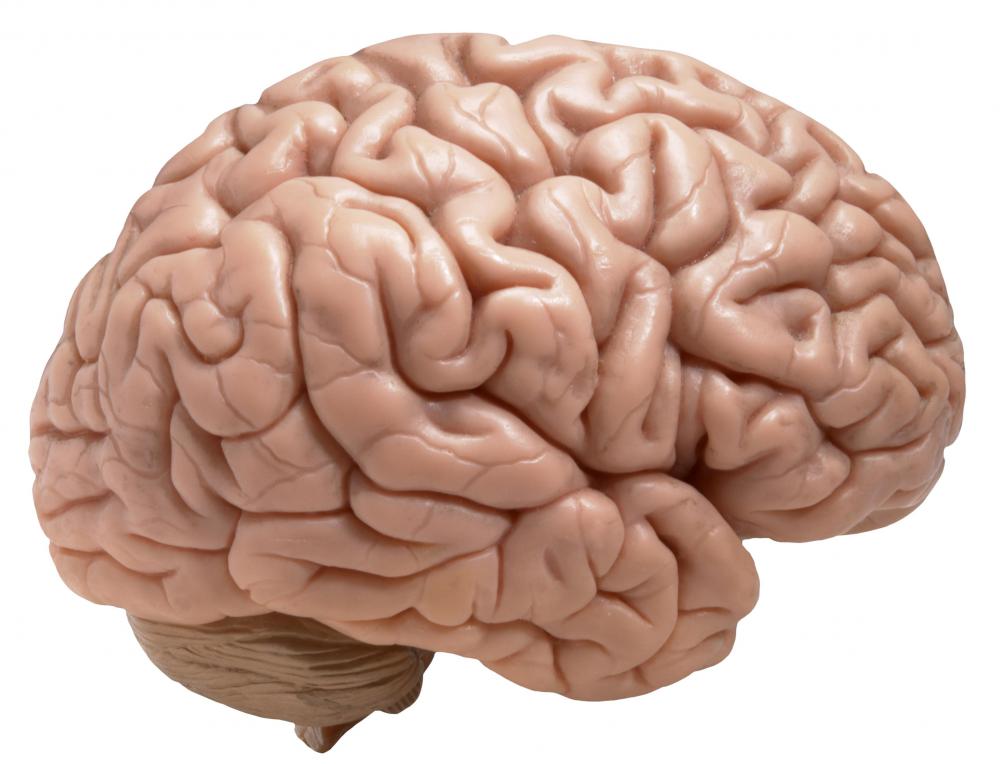At TheHealthBoard, we're committed to delivering accurate, trustworthy information. Our expert-authored content is rigorously fact-checked and sourced from credible authorities. Discover how we uphold the highest standards in providing you with reliable knowledge.
What are Dopaminergic Neurons?
Dopaminergic neurons are primarily found in the substantia nigra pars compacta of the brain, and they have also been found in the ventral tegmental area (VTA) in the midbrain. Some dopaminergic neurons are located in the hypothalamus in the arcuate nucleus. These neurons use the neurotransmitter dopamine to relay messages to the body. Dopamine controls many functions of the brain, including mood, stress, and muscle control. An absence of dopaminergic neurons may cause Parkinson’s disease to develop.
There are four dopaminergic pathways in the brain used to distribute dopamine. They are the mesocortical pathway, the mesolimbic pathway, the nigrostriatal pathway, and the tuberoinfundibular pathway. Some dopaminergic neurons may travel between the pathways.

The dopaminergic neurons are the main source of dopamine production in the body. Low levels of dopamine may be responsible for depression, some sleep disorders, and an inability to focus on a task. High dopamine levels may cause compulsive behavior and play a role in the reward feeling of addiction. The dopaminergic neurons may excite before the pleasurable activity occurs, causing a compulsion to engage in the activity.

A lack of dopamine may cause involuntary muscle movements, one of the prime indicators of Parkinson’s disease. The first symptom noticed may be a hand tremor that affects only one side of the body. As the disease progresses, the majority of the symptoms may affect one side of the body more than the other side of the body.
Slow movements or rigid muscles may occur among many with Parkinson’s disease because of the lack of dopamine available for use in the brain. Some people may not be able to blink or gesture when speaking after living with the disease for a long time. Eventually, many people find that their ability to speak has changed, and they may mutter, talk in a monotone, or repeat words before completing a sentence.
Treatment for Parkinson’s disease usually focuses on replacing dopamine in the brain. Dopaminergic neurons need a ready supply of the neurotransmitter to prevent the involuntary movements that are the hallmark of Parkinson’s disease. The brain cannot use some forms of synthetic dopamine, and most doctors believe the most effective medication available is L-dopamine.
A dopamine agonist may be used to fool the brain into functioning as if dopamine is present in the brain. The dopaminergic neurons use the dopamine agonist to control involuntary movements and for mood regulation. These medications may cause unusual behaviors in those that take them, and some people may compulsively eat, gamble, or engage in promiscuous sexual activity. Some people with Parkinson’s disease may require brain surgery to treat the condition if dopamine replacement options have failed.
AS FEATURED ON:
AS FEATURED ON:












Discuss this Article
Post your comments